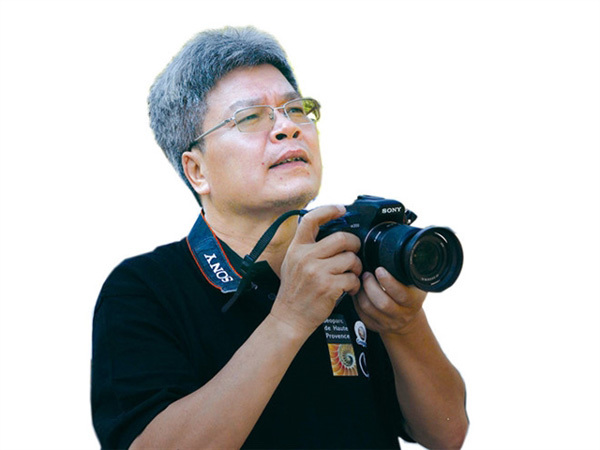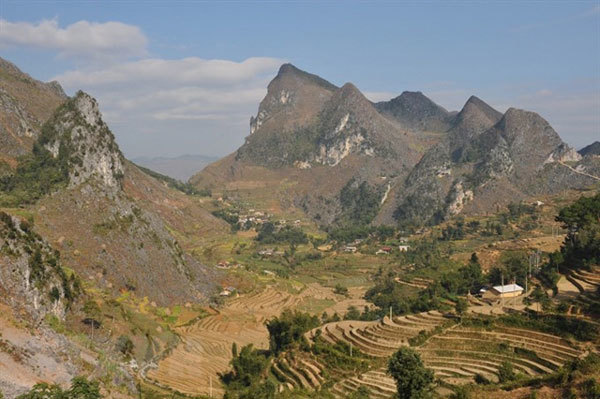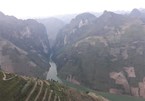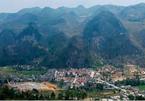He talks to Ngu Yen about the procedures to obtain this recognition and what should be done to preserve heritage sites.
 |
| Associate Professor Tran Tan Van, director of the Vietnam Institute of Geosciences and Mineral Resources. Photo thanhnien.vn |
How did you compile the first dossiers for Vietnam’s natural heritages to seek UNESCO recognition?
My colleagues and I have worked on two dossiers related to sites with globally outstanding geological values and four dossiers for UNESCO Global Geoparks.
We started on the first dossier for Ba Be National Park in the northern province of Bac Kan in 2005-2006. The process at that time was quite simple. The provincial People’s Committee invited experts and showed them the limited budget we had before we prepared the dossier. The initial application was turned down, but the UN culture agency gave us another chance in co-operation with Na Hang Natural Reserve in the neighbouring province of Tuyen Quang.
Preparing a dossier for a heritage site does not only mean compiling documents. It also includes surveys, research, international conferences and expert evaluations to submit to the World Heritage Council. It is a struggle, and the Vietnam National Commission for UNESCO plays a significant role in directing, co-ordinating and even lobbying.
After that you prepared a dossier for Dong Van Karst Plateau Geopark. How did that go?
It wasn't perfect. I wouldn't have been able to make it without other scientists. We implemented state-level research funded by the Ministry of Science and Technology and another international joint project between Vietnam and Belgium. The project received great support from loyal friends like Prof Jan Maschelein and Prof Michiel Dusar. They have been working with us for nearly 30 years.
The project started in 2003, and was launched in 2006. Dong Van Karst Plateau Geopark was officially established in 2009, and the dossier was compiled and recognised as a UNESCO Global Geoparks in 2010. We had limited experience but authorities in Ha Giang showed great determination.
How determined were they?
At first, we asked for recognition for only the two districts of Dong Van and Meo Vac, but the provincial Party Committee, People’s Council and People’s Committee insisted it was not enough – the dossier must include four districts including Yen Minh and Quan Ba. We realised they were right later on.
Dong Van Karst Plateau Geopark was pretty successful, despite some shortcomings in the preparation, and Ha Giang Province is planning to extend the geopark westwards to include Ha Giang City as well.
What has been the most difficult dossier so far?
We were invited to work on a dossier for the Trang An Landscape Complex in the northern province of Ninh Binh, together with other specialists from the Archaeologists' Institute and international experts. It was the toughest one due to UNESCO’s high demands and different viewpoints from the Vietnamese side. We were asked to compile a dossier for a World Natural Heritage, which we believed should include cultural elements to create a persuasive profile. After the dossier was submitted we travelled to Qatar to defend the case, but there were still debates among members.
The dossier was ultimately unanimously approved by the Executive Council of UNESCO. Trang An is the only World Natural and Cultural Heritage in Vietnam, and one of just 30 heritages of its kind in the world.
The value of the Dong Van Rock Plateau has been recognised, but questions remain regarding whether the site will be exploited for commercial purposes, or the original cultures of ethnic people will be negatively affected?
There are many investors interested in the geopark, some of whom even want to construct high-rise buildings, swimming pools and casinos.
 |
| Dong Van Karst Plateau Geopark was recognised as a UNESCO Global Geopark in 2010. VNA/VNS Photo Thanh Ha |
However, we always promote community-based tourism and the development of local specialties, from which locals can benefit, not only investors. Balancing the interests of locals and investors is the spirit of every UNESCO Global Geopark.
We also demonstrate this point in other geoparks, such as Ly Son – Sa Huynh in the central province of Quang Ngai. Despite its recent recognition, it has also attracted interest from many investors. After being consulted, we also said that local projects should be supported, while others should be thoroughly considered. Added to that, efforts should be made to ensure that nothing is done beyond natural endurance.
The development of such heritages will face waste treatment issues. How do you raise that issue for long-term development of national geoparks?
Of course, the dossier must mention issues the area is dealing with like calamities, geological hazards or environmental sanitation, and include other appendices like plans for fresh water and waste treatment.
Dong Van and Non Nuoc Cao Bang UNESCO Global Geoparks cover large areas with sparse populations and little industrial waste, while domestic waste is mostly organic. The waste and sewage caused by tourism remains at an acceptable level. However, it is time to take these issues into consideration.
You worked on the dossier for UNESCO recognition, but how to retain the title?
This might sound like an exaggeration. It is difficult to achieve the title, but it is even harder to keep it. UNESCO recognition is valid for only four years, so every four years the UN agency re-evaluates the site. If the heritage is still in a good condition, it retains its title, but otherwise, it might receive a warning or even be removed from the UNESCO world heritage list.
This demands continuous efforts, but that is good for the heritages themselves, isn't it? VNS

Dong Van Karst Plateau Geopark
Dong Van Karst Plateau UNESCO Global Geopark is located in the northeastern province of Ha Giang. Its landscape is spectacular and unique with high mountains and deep canyons.

Dong Van Plateau looks to boost local tourism
Since 2015, the northern mountainous province of Ha Giang has witnessed an annual rise of 10 percent in the number of tourists.
 Associate Professor Tran Tan Van, director of the Vietnam Institute of Geosciences and Mineral Resources, has been preparing dossiers for many of Vietnam’s natural heritages to seek UNESCO recognition.
Associate Professor Tran Tan Van, director of the Vietnam Institute of Geosciences and Mineral Resources, has been preparing dossiers for many of Vietnam’s natural heritages to seek UNESCO recognition.